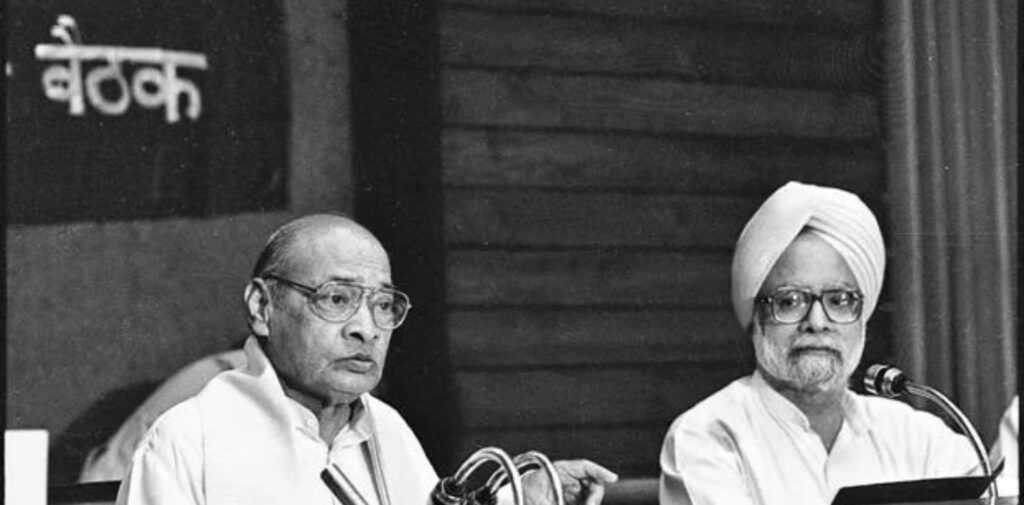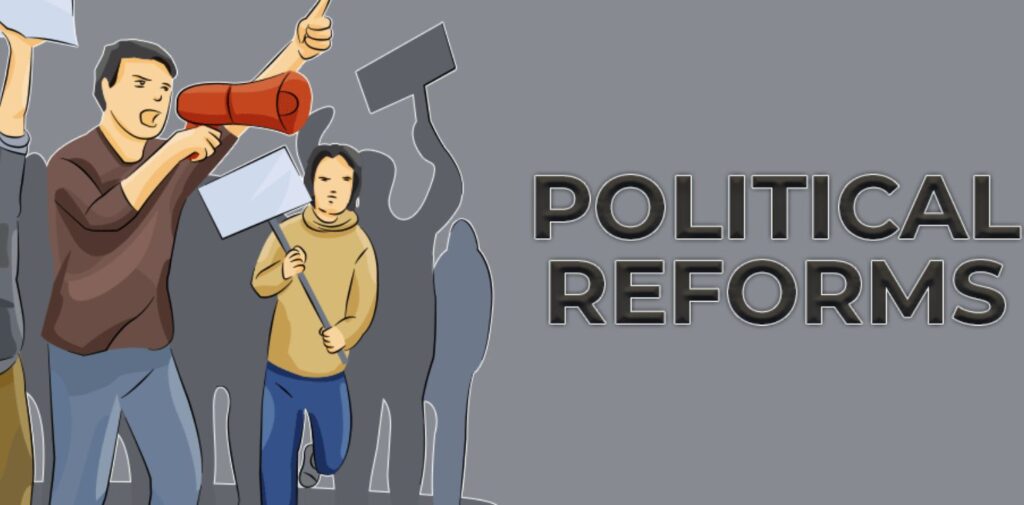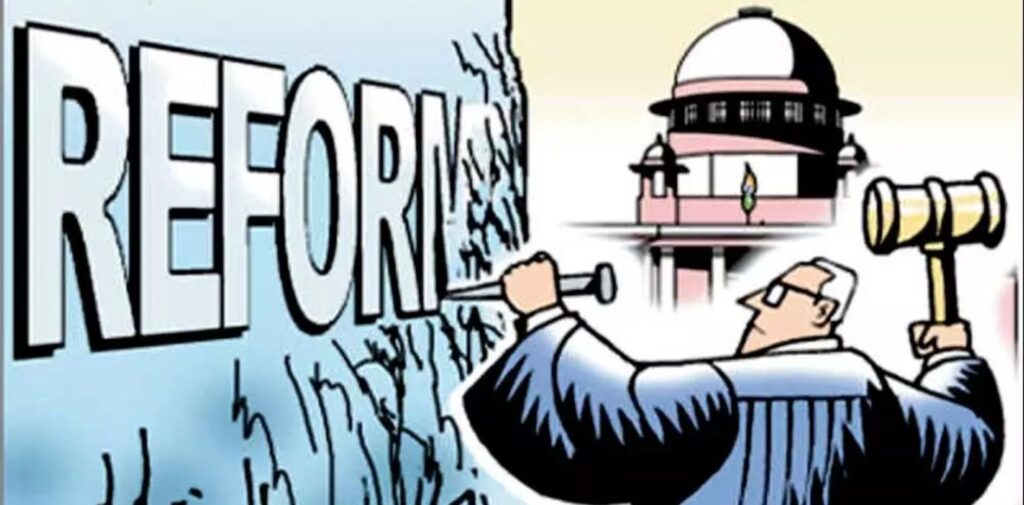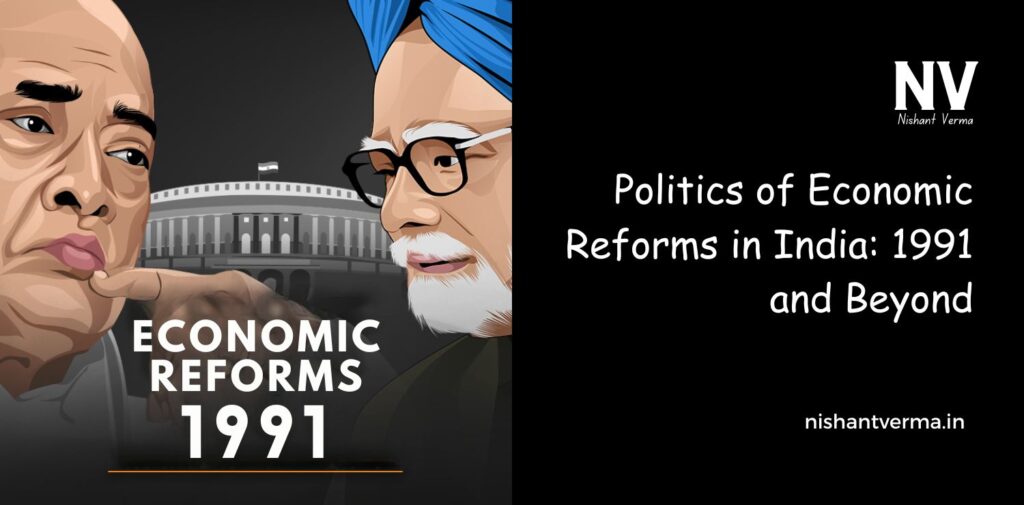India is a large country with over a billion people. For many years after its independence in 1947, India followed a kind of economic policy where the government controlled many parts of the economy. However, in 1991, India went through a big change, known as economic reforms. These reforms changed the way the country did business, handled money, and connected with the rest of the world. This article will explain the politics behind these reforms and how they changed India’s economy.
The Situation Before 1991: A Controlled Economy
Before 1991, India had a system called a “controlled economy”. This means that the government controlled most parts of the economy. There were many rules and regulations that businesses had to follow, and the government decided who could import goods, how much tax businesses had to pay, and what goods and services could be produced. This system was supposed to help India grow after independence and protect local industries.
However, over time, this system started to show its problems. The economy was not growing as fast as people wanted it to. There was high unemployment (many people didn’t have jobs), inflation (prices of goods were rising), and a lot of people were living in poverty. The country’s foreign exchange reserves, which is the money the government keeps for international trade, were running low. India even faced the risk of defaulting on its debts, meaning it might not be able to pay back the money it owed to other countries.
In simple terms, India’s economy was struggling, and it was clear that something needed to change.

The Crisis of 1991: A Turning Point
In 1991, India faced a huge economic crisis. The government didn’t have enough money to pay for the goods it needed to buy from other countries. As a result, India had to borrow money from international organizations like the International Monetary Fund (IMF) and the World Bank.
At this time, a new government, led by Prime Minister P.V. Narasimha Rao, took charge. The government had to make some tough decisions to avoid a collapse of the economy. This is when the famous economic reforms started. The government decided to move away from the old controlled system and open up the economy to more competition, trade, and investment from other countries.
The Key Economic Reforms of 1991
- Liberalization: The government decided to allow businesses more freedom. Before 1991, companies had to get permission from the government to start new businesses or expand existing ones. This was called “licensing.” After 1991, the government reduced these controls, allowing businesses to grow faster and easier. This process is known as liberalization.
- Privatization: In the past, the government owned many big companies. But in 1991, the government started to sell off its shares in these companies to private investors. This is known as privatization. The idea was that private companies would run businesses more efficiently than the government.
- Globalization: India opened up its markets to the world. Before 1991, India had many restrictions on imports and exports. The government reduced tariffs (taxes on imported goods) and allowed more foreign companies to set up businesses in India. This is called globalization. It made India more connected with the global economy, and foreign companies started to invest in India.
- Tax Reforms: The government also made changes to the way taxes were collected. They reduced the tax rates for both companies and individuals, making it easier for businesses and people to make money and save it. These tax reforms were meant to encourage investment and growth.

The Political Support for Reforms
When these economic reforms were introduced, they were not easy decisions. Many people did not like the idea of changing the old system. Some felt that these reforms would benefit rich people and harm the poor. Others thought that opening up the economy to foreign companies would hurt Indian businesses.
However, the government decided to push forward with these changes because they believed it was the only way to save the economy. Prime Minister P.V. Narasimha Rao played a key role in this decision. He worked closely with Finance Minister Manmohan Singh, who is often credited for shaping the reforms. Together, they faced both political and public resistance, but they managed to convince most of the country that these reforms were necessary for long-term growth.
Many political leaders, businesspeople, and experts supported the reforms because they saw them as a way to make India more modern and competitive. The idea was to give India’s economy the chance to grow faster by opening it up to new ideas, foreign investments, and technological advancements.
The Impact of Economic Reforms
The economic reforms of 1991 had a huge impact on India, and these changes can still be seen today.
- Growth of the Economy: The Indian economy started growing much faster after 1991. More businesses started to invest in India, and more jobs were created. India’s GDP (Gross Domestic Product), which is the total value of goods and services produced in the country, began to grow at a rate of around 6-8% per year. This was a huge improvement compared to the slower growth before 1991.
- Increase in Foreign Investment: By opening up the economy, India attracted more foreign investment. Companies from around the world started to set up factories, offices, and businesses in India. This brought in new technologies, jobs, and ideas, which helped the economy grow even faster.
- Rise of the Middle Class: As the economy grew, many people found better job opportunities and higher wages. This led to the rise of a large middle class in India, with people earning enough to afford cars, homes, and a better quality of life. This middle class became an important part of the economy, and it played a big role in the growth of markets for goods like smartphones, cars, and entertainment.
- Changing the Job Market: The economic reforms also led to a change in the types of jobs available in India. Before 1991, many people worked in government jobs or agriculture. After the reforms, many more people found jobs in private companies, technology sectors, and services like banking, software, and retail. This led to the rise of companies like Infosys, Wipro, and Tata Consultancy Services (TCS), which became global leaders in IT services.
- Improved Relations with the World: Globalization allowed India to become a more active participant in international trade and politics. As India’s economy grew, it became an important player in global markets. Indian businesses started to expand abroad, and countries like the United States and European nations became more interested in trading with India.

Challenges and Criticisms of the Reforms
While the economic reforms brought many positive changes, there were also challenges and criticisms.
- Inequality: Even though the economy grew, many people, especially in rural areas, did not benefit as much from the reforms. The rich became richer, while many poor people continued to struggle with basic needs. This gap between the rich and the poor became a major issue in India’s politics.
- Unemployment: While many new jobs were created, some industries, especially in agriculture, were not able to compete in the global market. This led to job losses in certain areas, especially in the traditional manufacturing sector.
- Environmental Concerns: As more industries were set up and the economy grew, environmental issues like pollution and the overuse of natural resources became more serious concerns.
Conclusion: The Legacy of Economic Reforms
The economic reforms of 1991 completely changed India’s economy. They made India a more open, competitive, and rapidly growing country. While there have been challenges, the reforms helped India become one of the world’s fastest-growing major economies.
The story of India’s economic reforms is a reminder that difficult decisions, when made with careful thought and planning, can help a country grow and improve. Today, India continues to face challenges, but the progress made since 1991 shows that the right policies can lead to a better future. The politics behind these reforms were not easy, but they paved the way for India’s development in the 21st century.




